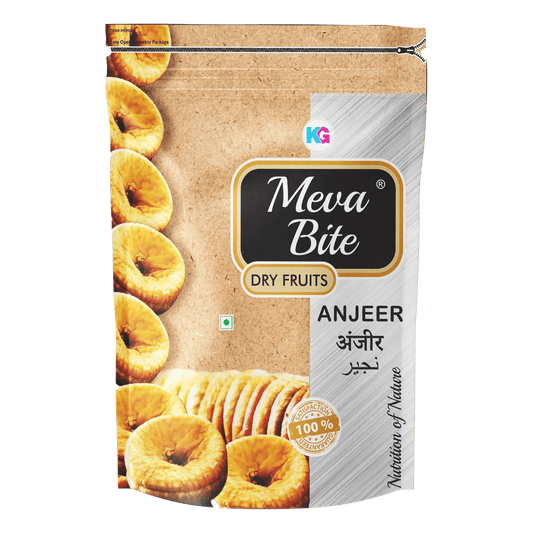As winter sets in, our bodies crave warmth, energy, and immune support. One of the easiest ways to nourish yourself naturally is by adding iron-rich dry fruits to your daily diet. These winter superfoods not only help combat fatigue and anaemia but also boost circulation and keep you feeling vibrant throughout the season.
Which dry fruits are highest in iron — and how much should I eat daily to boost your energy levels?
Short Answer: Raisins, dates, dried apricots, and figs are top iron-rich dry fruits. A daily intake of 30–50g can support energy and reduce fatigue.
Long Answer:
- Raisins: Contain about 1.9 mg of iron per 100g. A 30g serving offers ~0.6 mg.
- Dried Apricots: Offer 2.7 mg per 100g. A 40g serving provides ~1.1 mg.
- Dates: Provide 1 mg per 100g. A 50g serving gives ~0.5 mg.
- Dried Figs: Contain 2.0 mg per 100g. A 40g serving delivers ~0.8 mg.
- Prunes: Offer 0.9 mg per 100g. A 30g serving gives ~0.3 mg.
| Dry Fruit | Iron (mg per 100g) | Recommended Daily Serving | Iron per Serving (approx.) |
|---|---|---|---|
| Raisins | 1.9 | 30g | 0.6 mg |
| Dried Apricots | 2.7 | 40g | 1.1 mg |
| Dates | 1.0 | 50g | 0.5 mg |
| Dried Figs | 2.0 | 40g | 0.8 mg |
| Prunes | 0.9 | 30g | 0.3 mg |
These iron-rich dry fruits for winter are excellent for boosting energy, especially when paired with vitamin C-rich foods to enhance absorption.
Can iron-rich dry fruits really help with winter tiredness or low immunity — how do they work in the body?
Short Answer: Yes, iron-rich dry fruits support red blood cell production and oxygen transport, helping reduce fatigue and improve immunity in winter.
Long Answer:
- Iron’s Role: Iron is essential for haemoglobin, which carries oxygen in the blood. Low iron means less oxygen, leading to fatigue.
- Dry Fruits as Natural Iron Sources: They provide non-heme iron, which supports energy metabolism and warmth.
- Immunity Boost: Iron supports immune cell function, helping the body fight winter infections.
- Pairing with Vitamin C: Eating dry fruits with citrus, amla, or lemon water improves iron absorption.
-
Ideal for Vegetarians: Dry fruits are excellent plant-based iron sources for those avoiding meat.

Are these dry fruits safe for people with diabetes or weight concerns — do they spike blood sugar?
Short Answer: Yes, in moderation. Choose low-GI options like dried apricots and prunes, and limit portions to 30–40g to avoid sugar spikes.
Long Answer:
- Low-GI Choices: Dried apricots (GI ~30) and prunes (GI ~29) are safer for blood sugar control.
- Portion Control: Stick to 30–40g per serving to enjoy benefits without excess sugar.
- Pair with Protein: Combine with nuts or yoghurt to slow glucose absorption.
- Avoid Candied Varieties: Choose unsweetened, sulphur-free dry fruits to reduce sugar intake.
- Consult a Dietitian: For personalised advice, especially if managing diabetes or weight loss goals.
What’s the best way to include iron-rich dry fruits in my winter diet — can I add them to breakfast, snacks, or desserts?
Short Answer: Yes! Add them to porridge, trail mix, energy laddoos, or warm desserts like kheer for a tasty winter boost.
Long Answer:
- Breakfast: Add chopped dates and figs to warm oats or porridge with almonds and cinnamon.
- Snacks: Make a trail mix with raisins, prunes, walnuts, and pumpkin seeds.
- Energy Bites: Blend dates, apricots, and nuts into laddoos or bars for on-the-go energy.
- Desserts: Prepare kheer with jaggery, figs, and cardamom for a warming treat.
-
Salads and Chutneys: Add chopped dry fruits to winter salads or make tangy chutneys with dates and tamarind.

How do I know if I’m getting enough iron from dry fruits — should I combine them with other foods or supplements?
Short Answer: Watch for signs like fatigue or pale skin. Combine dry fruits with vitamin C-rich foods to boost absorption, or consult a doctor for supplements.
Long Answer:
- Common Deficiency Signs: Tiredness, pale skin, brittle nails, or frequent infections may indicate low iron.
- Pairing for Absorption: Combine dry fruits with oranges, amla, or lemon water to enhance non-heme iron uptake.
- Avoid Iron Blockers: Limit tea, coffee, and calcium-rich foods around iron-rich meals.
- Track Intake: Aim for 18 mg/day (women) or 8 mg/day (men) from all sources, including dry fruits.
- Supplements: If symptoms persist, consult a healthcare provider for iron supplements or blood tests.
As winter sets in, our bodies crave warmth, energy, and immune support. One of the easiest ways to nourish yourself naturally is by adding iron-rich dry fruits to your daily diet. These winter superfoods not only help combat fatigue and anaemia but also boost circulation and keep you feeling vibrant throughout the season.






